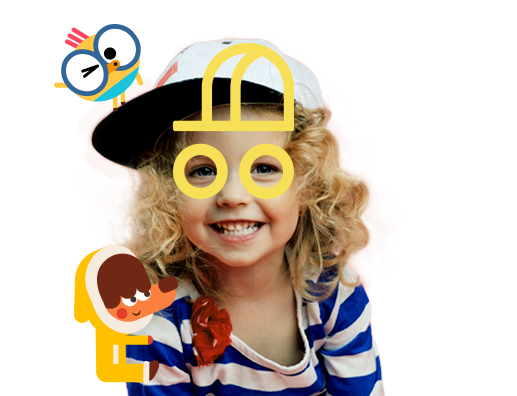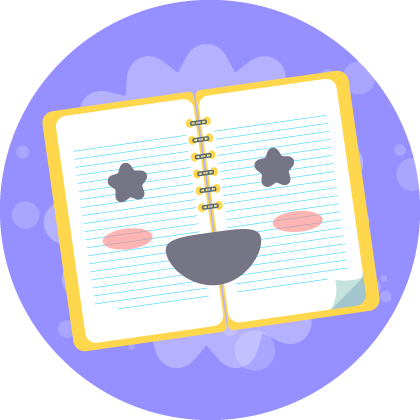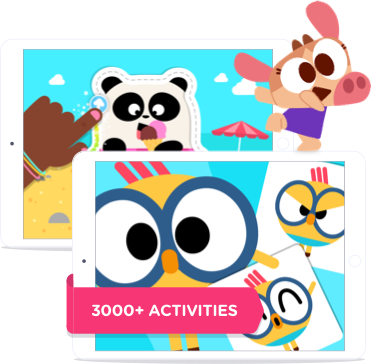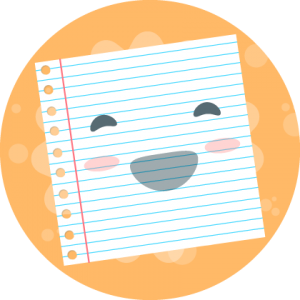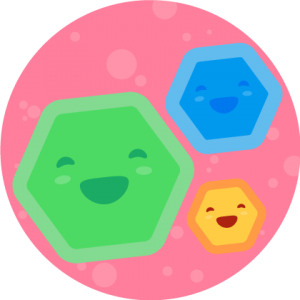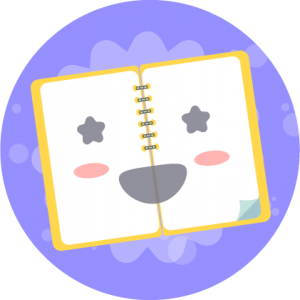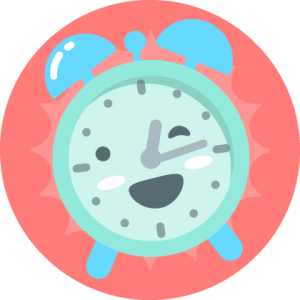I am here. Where are you? These two sentences are frequently used by English speakers, and of course, this makes sense, since they have some of the most common and useful words in this language. To make these sentences, it’s essential to know one of the main parts of the English language: pronouns in English.
What Are Pronouns?
Pronouns are words that are mainly used to replace a noun in a sentence. However, there are several different types of pronouns in the English language, each one of these has a particular purpose in the sentence. The basic pronoun definition describes them as small words that substitute nouns or even noun phrases to make the text less repetitive and clarifies that all these substitutions can be understood when reading the text. Most of the time, pronouns replace nouns that are already named, but in some cases, this is not necessary.
For children, learning pronouns comes naturally. They hear them daily on spontaneous speech and learn to use them for similar situations, which helps them familiarize themselves with the language. Even young children, age 2 or less, are able to use the basic personal pronouns to express themselves, especially by using the word “I”. This is a great milestone for them, given that it allows them to start expressing their individuality. More so, by learning and using the pronouns in day-to-day language, children can start mastering the basic verbs in English, to make new expressions with new meanings.
Personal Pronouns
Personal pronouns in English are the most known of all because they’re the most used in sentences and questions. These are the ones that indicate who is speaking, or if the sentence or question refers to one person or more.
There are two different types of personal pronouns according to their intention in a sentence, and both are equally relevant:
Subject pronouns
Object pronouns
The uses of the personal pronouns will depend on what’s being said since each of the two different types has its own purpose. Let’s see what these are.

Subject Pronouns
A subject pronoun is a name given to a pronoun that has replaced the subject of a sentence, whether this is a common noun (like table, cup, or painting), or a proper noun (such as Lisa, London, or America). So, if a personal pronoun is used to talk about a person, thing, animal, or place, and it’s the subject of the sentence, it is considered a subject pronoun.
I
you
she / he / it
we
you
they
Examples of subject pronouns:
I love studying!
You are my best friend.
She is a doctor.
He is a pilot.
It is my house.
We have two dogs.
You are swimming in the pool.
They are siblings.
Lisa is in the house – She is in the house.
The cup is in the dishwasher. – It is in the dishwasher.
Object Pronouns
me
you
her / him / it
us
you
them
Examples of object pronouns:
me – She gave me a pencil.
you – Billy is talking to you.
her – I am sending her a new email.
him – The dog is barking at him.
it – This is my picture. I’ve painted it.
us – The doctor gave us a lollipop.
you – Oh, we were looking for you!
them – Cowy is helping them clean.
Sometimes, in a sentence, the person or thing is not acting as a subject. Instead, they are the objects of the sentence. The objects’ pronouns are used to indicate who is affected by the action of the subject, and most of them are written differently from the subject pronouns.
For example, in the sentence “Cowy pulls the book”, Cowy is the subject, the action is to pull, and the object affected by this action is a book. This sentence can be expressed using object pronouns as well.

Possessive Pronouns
In a sentence, they can usually be used to replace a noun or a possessive adjective like my, your, his, her, our, their, or your. There is a possessive pronoun for each personal pronoun, except for “it”, in which case the possessive pronoun is not used.
Possessive pronouns are words that can be introduced in a sentence in two different ways, but the main use of possessive pronouns stays the same: to express ownership.
mine
yours
hers / his
ours
yours
theirs
Examples of possessive pronouns:
mine – The house is mine.
yours – This pencil is yours.
hers – Is this Lisa’s bag? Yes, it is hers.
his – There are two backpacks on the table. The blue one is his.
ours – The paint is his, and the brushes are ours, we are sharing!
yours – Take these presents, they are yours!
theirs – This is Cowy’s and Baby Bot’s house. The house is theirs.

Relative Pronouns
Relative pronouns have an important job: they connect sentences. There are five different relative pronouns, and each one is used in a specific way. However, what they all have in common is that the main use of relative pronouns is to connect a relative clause to an independent clause in order to add some extra information.
The most important thing to consider when using relative pronouns is to pick the right one according to the noun that’s being described in the main clause.
who
whom
which
that
who – this pronoun refers to a person that is the subject of the sentence.
Marla, who is a great student, is also a ballet dancer.
whom – this also refers to a person, but in this case, the person is the object of the sentence.
Lisa is whom I was talking to you about.
which – this is a pronoun used to refer to an animal or a thing.
The book, which I bought yesterday, is about science.
that – it’s the most common and used of all since it can refer to a person, animal or thing.
The bike that I gave you was green.

Possessive Relative Pronouns
whose
whose – When talking about ownership, this is the possessive relative pronoun that can be used, both for people and animals, and sometimes -in a formal situation- it can also be used for things.
Lisa has a friend whose hugs are really good.

Indefinite Pronouns
When there’s no need to refer to any specific person or thing, the indefinite pronouns are the ones to use. There are many of these, and they can be singular or plural, sometimes depending on the context where they are used.
Let’s take a look at some of these:
all / another / any
anybody/anyone
anything / each / everyone
everything / few / many
nobody / none / one
some / somebody/someone
all – refers to the whole amount of things or people
All my dresses are green.
another – a different person or thing, or an additional one
He wasn’t the person who brought the cat, it was another.
any – used when it doesn’t matter the quantity or number of something
Do you have any juice left?
anybody/anyone – refers to persons, when it doesn’t matter who it is
I haven’t talked to anyone yet.
anything – used for things, when it doesn’t matter what thing it is
Lisa didn’t bring anything to eat.
each – every member of a group, but considered individually
Each one of you has to bring an eraser.
everyone – used to refer to all the people
Cowy has told everyone about her birthday party.
everything – used to refer to all the things
Everything on the menu looks great!
few – it refers to a small number of things or people
I’ve seen just a few movies this month.
many – it’s used to refer to a large number of things or people
Many of my friends play football.
nobody – it means no person at all
Nobody was home when she called.
none – it means no person or things at all
I have none of my toys here.
one – it refers to a person that’s unidentified
Can I invite one more friend to the movies?
some – it’s used to talk about things or people with unspecified quantities
That cake looks good. Can I have some?
somebody/someone – it’s used to talk about a person that’s unknown
If you don’t know the time, you ask somebody.

Demonstrative Pronouns
As their name states, the main use of the demonstrative pronouns is to show, point to, or indicate things. These things can be near to the person or can be far. Also, it could be one thing or many things. For each one of these cases, there’s a pronoun that goes with it.
When things are near in distance or time:
this
The pronoun “this” is used to talk about one thing that is near the person that’s talking.
Yes, this is my book. I need it to study.
these
The pronoun “these” refers to two or more things that are located near the person that’s talking.
Have you tried these? They are my favorite cupcakes.
When things are far in distance or time:
that
The pronoun “that” is used to talk about just one thing that’s far away.
Look at that! It’s a lovely painting.
those
When talking about several things that are far, the pronoun to use is “those”.
I need those colors, the ones on the table.

Interrogative Pronouns
The main use of the interrogative pronouns, as their name says, is to interrogate, that is, to ask questions. When used in questions, these pronouns represent the thing or person that it’s being talked about.
who
This pronoun is used to ask about a person that’s not identified.
Who is at the door?
whom
This pronoun is also used when asking about a person that’s not identified, but when it’s not the subject of the sentence, but the object.
Whom did you see at the party?
what
The pronoun “what” is used to ask about things that are unspecified.
What is your favorite animal?
which
This pronoun can be used to ask about a person or a thing.
Which one of these backpacks is yours?
whose
“Whose” is also a possessive pronoun, but in this case, as an interrogative pronoun, it can be used to ask about a possession that belongs to a person.
Whose toys did you find on the floor?

Pronoun examples
Billy is a teacher. He teaches English.
There is somebody at the door. Can you see who is it?
I have a new doll. It’s very pretty.
Did you talk to them? They were looking for you.
Would you rather use these shoes or those?
Do you know anyone from France?
Lisa’s mom is here. She’s waiting in her car.
All of my hats are blue.
Is there something to eat? Yes, you can eat this sandwich.
Whose house is that? I think that is James’ house, it’s very pretty.
Elliot is going to the park. He’s meeting some of his friends there.
Cowy, who is Elliot’s friend, is very small.
Hi, Lisa! This is my friend, Elliot.
Those clouds are pretty. They’re big and fluffy.
We’re going to the theater. Do you want to come with us?
Playlearn with Lingokids!
Want to try learning all of this grammar through games, songs, and interactive activities? Download the Lingokids app and discover the world of playlearning™ – a safe, game-based learning experience that takes kids beyond the classroom.

